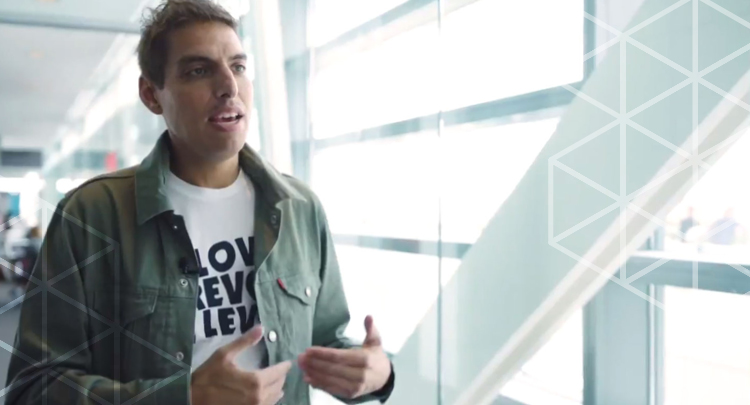Taking a Systems Approach to Change with Young Americans


 The Cause & Social Influence Initiative recently released the “Influencing Young Americans to Act” report, which is available to download here.
The Cause & Social Influence Initiative recently released the “Influencing Young Americans to Act” report, which is available to download here.The ultimate goal of social movements is change. The issue may be saving the earth’s oceans, expanding voting rights, improving a group’s standard of living, or addressing one of the many social ills that exist. The bottom line is that those of us representing a cause want something specific to change. While passionate, enthusiastic young people (18 to 30) often respond spontaneously to the actions we take to inspire them, couldn’t we use a more measured, systematic approach to launching and sustaining our social movements?
Let’s examine taking a systems approach to change in the realm of social causes.
Merriam-Webster defines a system as “a regularly interacting or interdependent group of items forming a unified whole.” The definition says nothing about being constant or restrictive. Systems can, and must, leave plenty of room for passion, enthusiasm, and spontaneity within them.
In a systems framework for addressing social issues, the “interdependent group of items” will fall within segments of what we’ll call the supporter’s journey: awareness, understanding, acceptance, and adoption. Within those segments will be various tactics and measurable milestones leading to outcomes designed to implement ideas in concert and make adjustments as necessary to improve those outcomes.
First, a few words about change itself.
As the saying goes, nothing is constant except change. We’ve all experienced it: Our manager quits and is replaced by someone we don’t know. We switch jobs and walk into a brand-new work culture. We’re an only child one day, and our parents bring home a baby the next. Even small, everyday events are changes: our children start attending two different schools with incompatible start times. Our ski boat gets a hole in it. We get a promotion with new responsibilities.
A 2014 study on the psychology of change published by the National Institutes of Health found that:
People have a basic need to maintain the integrity of the self, a global sense of personal adequacy. Events that threaten self-integrity arouse stress and self-protective defenses that can hamper performance and growth. However, an intervention known as self-affirmation can curb these negative outcomes. Self-affirmation interventions typically have people write about core personal values. The interventions bring about a more expansive view of the self and its resources, weakening the implications of a threat for personal integrity (Cohen & Sherman, 2014).
Whether we are aware of it or not, change threatens our core being — so we balk. When social movements ask people to support change for a social issue, they are essentially asking them to change themselves — the way they think, the way they act, the way they prioritize, the way they feel.
Fortunately, social causes have a distinct advantage. The NIH study says the fear of change can be curbed by having people examine and reaffirm their core values… and core values are what social movements arise from and appeal to.
Now, let’s look at a systems approach to change, keeping in mind your audience’s innate fear of it.
No one can support your cause if they don’t know about the issue and how you propose to change the current situation. This means you and your team of organizers must make some plans not only for how you’ll spread the word, but what words you’ll use.
Change feels unnatural. To change, one must open themselves (a trust issue right away) to hearing and thoughtfully considering new information. You may be asking them to let go of long-held beliefs or the habit of apathy. They’ll face questions from friends and family if they change. People dislike being wrong, so it’s against our nature to do something that feels as though we’re admitting we were lax in our attention to others or mistaken in a belief.
“As you listen, look for change agents … They will be your best hope for getting the widespread awareness you seek, and young people are masterful at this tactic.”
Here’s where you appeal to your audience’s core values by being a voice in conversations about the issue. At this stage, you should be listening to dialogue — in online forums, on social media, in comments to news articles, etc. — and contributing, while resisting the urge to jump in and lead. This is the time to contribute accurate information and helpful resources so that people who care about the issue come to see you as a thought leader.
As you listen, look for change agents (otherwise known as influencers), people who have the ability to truly inspire others with your particular message. They will be your best hope for getting the widespread awareness you seek, and young people are masterful at this tactic.
Young people need to understand your issue and proposed solution enough to act with confidence. As we’ve said, changing is tough, so we need to be sure our target audiences have all the correct information they need to feel comfortable doing so.
Voting is a good example of how a lack of understanding can affect potential supporters. Awareness is high — most Americans know they can vote — yet participation is low. A high percentage of non-voters say they don’t vote because they don’t understand the issues or see much difference between those running. Could candidates and the media do a better job articulating the issues?
Here’s where your ability to frame an issue for young people is critical. It’s easy to attack the ills in society, but people need to hear what they can do about those ills by working with you. Start telling emotion-based stories and invite your audiences to do the same.
In the acceptance stage, your message is getting through to people and beginning to ring true. They are talking about your issue and your solution on social media and sharing your updates with their friends and followers. People are visiting your website and looking for ways to get involved.
“The best way to keep abreast of activities and conversations about your cause is to set up systems for gathering reliable, ongoing feedback.”
Here’s where opportunities must be readily available to nudge those who are interested into taking some low-level initial action, such as volunteering at an event or providing their email for updates. As these individuals complete actions of support, you can reinforce their behavior, moving them along a path of increasing participation and commitment.
Congratulations! You and your cause have inspired young people to adopt your cause as their own. They have become your voice on the ground, recruiting new supporters, motivating others to action, and driving activism-level change.
Don’t take them for granted! Don’t fall into the trap of thinking you’ve secured them, and move away to recruiting others exclusively. Keeping their passion and inspiration high will be crucial to keeping their commitment and activity.
The best way to keep abreast of activities and conversations about your cause is to set up systems for gathering reliable, ongoing feedback. Before acting, we must always listen. To listen and participate in dialogue (as discussed above), put together small groups of people — influencers and people who are great at objective observation — who can bring the team feedback from those who are talking about and acting on your issue.
Change can evolve organically. By taking a more systematic approach to change instead, you have a much stronger chance of keeping young people excited and engaged long enough to see your desired change become a reality.

Cohen, G. L., & Sherman, D. K. (2014, January). The psychology of change: self-affirmation and social psychological intervention. Annual Review of Psychology, 65, 333–371. Retrieved from https://doi.org/10.1146/annurev-psych-010213-115137
Cause and Social Influence research can be found at www.causeandsocialinfluence.com.